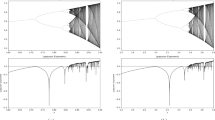Abstract
The rapid development, advancement, and growing use of satellite imagery and information technologies have made the security of data storage and transmission essential to prevent unlawful, unofficial, unauthorized, and illegal use/access. This paper proposes a secure satellite image encryption technique based on chaotic and Advanced Encryption Standard (AES) techniques to protect critical and confidential satellite imagery. Arnold’s cat map is used to shuffle the pixel values. A chaotic Henon map is used to generate a random sequence for the AES algorithm, and the shuffled-image is encrypted using the AES algorithm. The security and performance is acceptable to deal with high resolution and multi-spectral satellite imagery. The experimental results are shown, along with those for some traditional encryption techniques, for a comparison and evaluation. Detailed experimental results are also given of the security, statistical, and performance analyses of the complete implementation of the new proposed solution. The proposed technique presents numerous interesting and attractive features, including a high level of security, sufficiently large key-space with improved key sensitivity, pixel distributing uniformity, and acceptable speed.
Similar content being viewed by others
Explore related subjects
Discover the latest articles, news and stories from top researchers in related subjects.References
Williamson, R. A. (2002). Remote sensing and transportation security. In Pecora 15/land satellite information IV/ISPRS commission I/FIEOS conference proceedings.
Schneier, B. (1996). Applied cryptography: protocols, algorithms and source code in C. New York: Wiley.
Menezes, A. J., Oorschot, P. C. V., & Vanstone, S. A. (1997). Handbook of applied cryptography. Boca Raton: CRC Press.
Hodjat, A., & Verbauwhede, I. (2004). A 21.54 Gbits/s fully pipelined AES processor on FPGA. In Proceedings of the 12th annual IEEE symposium on field-programmable custom computing machines (FCCM), April 2004 (pp. 308–309).
Janvinen, K., Tominisko, M., & Skytta, J. (2003). A fully pipelined memoryless 17, 8 Gbps AES-128 encryptor. In International symposium of field programmable gate arrays (pp. 207–215).
Mclone, M., & McCanny, J. V. (2003). Rijndael FPGA implementations utilizing look-up tables. The Journal of VLSI Signal Processing, 34(3), 261–275.
Federal Information Processing Standards Publication, FIPS PUB 197, Advanced Encryption Standard (AES), November 2001.
Bourbakis, N., & Dollas, A. (2003). Scan-based compression-encryption hiding for video on demand. IEEE Multimedia, 10(3), 79–87.
Shiguo, L., Jinsheny, S., & Zhiquan, W. (2005). A block cipher based a suitable of the chaotic standard map. Chaos, Solitons and Fractals, 26, 117–129.
Stinson, D. R. (2002). Cryptography: theory and practice (2nd edn.). Boca Raton: Chapman & Hall/CRC.
Usama, M., & Khan, M. K. (2008). Classical and chaotic encryption techniques for the security of satellite images. In International symposium on biometrics and security technologies, ISBAST 2008, April 2008 (pp. 1–6).
Jiang, Z. P. (2002). A note on chaotic secure communication systems. IEEE Transactions on Circuits and Systems. I, Fundamental Theory and Applications, 49(1), 92–96.
Sarker, M. Z. H., & Parvez, S. (2005). A cost effective symmetric key crypto-graphic algorithm for small amount of data. In Proceedings of the 9th IEEE international multi topic conference, December 2005 (pp. 1–6).
Behnia, S., Akhshani, A., Mahmodi, H., Akhavan, A., & El Naschie, M. S. (2008). A novel algorithm for image encryption based on mixture of chaotic maps. Chaos, Solitons and Fractals, 35(2), 408–419
Wong, K. W., Ho, S. W., & Yung, C. K. (2003). A chaotic cryptography scheme for generating short ciphertext. Physics Letters. A, 310, 67–73.
Pareek, N. K., Patidar, V., & Sud, K. K. (2003). Discrete chaotic cryptography using external key. Physics Letters. A, 309, 75–82.
Guan, Z.-H., Huang, F., & Guan, W. (2005). Chaos-based image encryption algorithm. Physics Letters. A, 153–157.
Arnold, V. I., & Avez, A. (1968). Ergodic problems in classical mechanics. New York: Benjamin
Heng-fu, Y., Yan-peng, W., & Zu-wei, T. (2008). An image encryption algorithm based on logistic chaotic maps and Arnold transform. Journal of Hengshui University, 40–43.
Qiong, Z., Minfen, S., & Yikui, Z. (2007). 3D chaotic cat map based digital image encryption method. Journal of Data Acquisition &Processing, 292–298.
Sun, Q.-D., Ma, W.-X., Yan, W.-Y., & Dai, H. (2008). A random scrambling method for digital image encryption and comparison with the technique based on Arnold transform. Journal of Shanghai Second Polytechnic University, 159–163.
Petrisor, E. (2003). Entry and exit sets in the dynamics of area preserving Henon map. Chaos, Solitons and Fractals, 17(4), 651–658.
Shannon, C. E. (1948). A mathematical theory of communication. The Bell System Technical Journal, 27(3), 379–423 and 623–656.
Shannon, C. E. (1959). Coding theorems for a discrete source with a fidelity criterion. IRE National Convention Record, Part 4 (pp. 142–163).
Xiang, T., Liao, X., Tang, G., Chen, Y., & Wong, K.-W. (2006). A novel block cryptosystem based on iterating a chaotic map. Physics Letters. A, 349, 109–115.
Khan, M. K., Zhang, J., & Wang, X. (2008). Chaotic hash-based fingerprint biometric remote user authentication scheme on mobile devices. Chaos, Solitons and Fractals, 35(3), 519–524.
Khan, M. K., Xie, L., & Zhang, J. (2010). Chaos and NDFT-based concealing of fingerprint-biometric data into audio signals for trustworthy person authentication. Digital Signal Processing, 20(1), 179–190.
Author information
Authors and Affiliations
Corresponding author
Rights and permissions
About this article
Cite this article
Muhaya, F.T.B. Chaotic and AES cryptosystem for satellite imagery. Telecommun Syst 52, 573–581 (2013). https://doi.org/10.1007/s11235-011-9462-z
Published:
Issue Date:
DOI: https://doi.org/10.1007/s11235-011-9462-z




